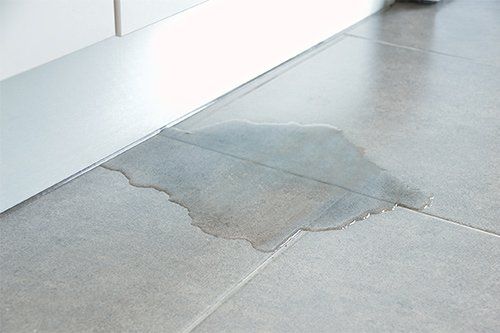Familiarize Yourself With 6 Most Factors Behind Water Seepage Within Your Home
Familiarize Yourself With 6 Most Factors Behind Water Seepage Within Your Home
Blog Article
We've noticed this article on How Fast Water Damage Can Ruin Your Home below on the net and believe it made sense to relate it with you on this site.

Leakages not just create waste of water but can also cause unnecessary damage to your house as well as promote unwanted organic growth. Water leakages could go undetected because most of the pipework in our home is concealed. By recognizing as well as looking for day-to-day circumstances that cause leakages, you can secure your home from future leakages as well as unnecessary damages. Today, we will consider six leakage triggers that may be creating your pipes to trickle.
Instantaneous temperature changes.
Extreme temperature modifications in our pipes can cause them to expand as well as contract suddenly. This growth as well as contraction may create splits in the pipelines, specifically if the temperature level are below freezing. It would be best if you kept an eye on how your plumbing functions. The visibility of the formerly pointed out scenarios often indicates a high risk.
Corroded water supply
This may be the cause of discoloration or bending on your water pipelines. If our plumbing system is old, think about replacing the pipelines considering that they are at a higher threat of rust than the newer versions.
Defective Pipeline Joints
The factor at which your pipes connect is regularly the weakest web link in the waterline. Pipe joints can wear away with time, leading to water leaks. The bulk of pipe joints are not quickly visible. If you have loud pipes that make ticking or banging noises, especially when the warm water is activated, your pipe joints are possibly under a great deal of stress. It is a good idea to have your plumber check your system annually.
Intruding roots
Most water leakages start outside the house instead than inside it. You may notice damp patches or sinkholes in your backyard, and that could imply that tree origins are getting into water lines creating water to leak out.
Poor Water Connectors
Sometimes, a leak can be brought on by loose tubes and pipelines that provide your appliances. Most of the time, moving is what causes the loosened water Links. You could discover when it comes to a washing device, a tube may spring a leak as a result of shaking throughout the spin cycle. In case of a water connections leak, you might discover water running directly from the supply line or pools around your appliances.
Obstructed Drains
Obstructed drains could be irritating as well as inconveniencing, but they can occasionally wind up triggering an overflow resulting in burst pipes. Maintain getting rid of any type of materials that might decrease your drains that can block them to avoid such troubles.
All the above are root causes of leakages however not all water leaks result from plumbing leakages; some leaks could come from roof covering leaks. All leakages should be repaired immediately to prevent water damages.
Leaks not only create waste of water but can likewise cause unnecessary damages to your residence and promote undesirable natural growth. By looking and also recognizing for everyday situations that trigger leaks, you can secure your residence from future leakages and also unneeded damages. Today, we will certainly look at 6 leakage creates that might be creating your pipelines to leak.
At times, a leakage can be triggered by loose hose pipes and pipes that provide your devices. In instance of a water connections leak, you may see water running straight from the supply line or pools around your appliances.
How To Check For Water Leak In Your Home
How To Check for Leaks
The average household's leaks can account for nearly 10,000 gallons of water wasted every year and ten percent of homes have leaks that waste 90 gallons or more per day. Common types of leaks found in the home are worn toilet flappers, dripping faucets, and other leaking valves. These types of leaks are often easy to fix, requiring only a few tools and hardware that can pay for themselves in water savings. Fixing easily corrected household water leaks can save homeowners about 10 percent on their water bills.
To check for leaks in your home, you first need to determine whether you're wasting water and then identify the source of the leak. Here are some tips for finding leaks:
Take a look at your water usage during a colder month, such as January or February. If a family of four exceeds 12,000 gallons per month, there are serious leaks.
Check your water meter before and after a two-hour period when no water is being used. If the meter changes at all, you probably have a leak.
Identify toilet leaks by placing a drop of food coloring in the toilet tank. If any color shows up in the bowl after 10 minutes, you have a leak. (Be sure to flush immediately after the experiment to avoid staining the tank.)
Examine faucet gaskets and pipe fittings for any water on the outside of the pipe to check for surface leaks.
Undetected water leaks can happen without the home or business owner even realizing. If you suspect a water leak, but not able to find the source. It is time to contact a professional water leak detection service, The Leak Doctor.
How To Find a Water Leak In Your Home
https://www.leakdoctor.com/blog/How-To-Check-For-Water-Leak-In-Your-Home_AE197.html

Do you enjoy reading up on Common Water Leaks In House? Write a remark down the page. We would be interested to hear your opinions about this article. Hoping that you visit us again in the near future. Appreciated our posting? Please share it. Let other people find it. I value reading our article about Most Common Causes of Leaky Pipes.
We've got this! Report this page